Our garden will need another generation
Melissa Northern Italy zone 8
8 years ago
Featured Answer
Sort by:Oldest
Comments (31)
mariannese
8 years agoozmelodye
8 years agoRelated Discussions
Another non general question, this one for Kim
Comments (14)Whether to only use one type or the other is a completely personal choice. Each has its benefits and its downsides. Whatever works best with your ethics and aesthetics, as well as the types you grow, where you grow them, is appropriate. What I deal with, where I deal with them, a combination of both works very well and satisfies all involved. There are situations in which I simply can't use organics. Many clients have dogs (as do I) and they LOVE organic fertilizers. Most organic fertilizers are stuff dogs eat and they love rolling in all of it to mask their scents, a holdover from ancient times when they were actual "predators". Most organics also attract all manner of "wild life", including skunks, raccoons, opossums, rats, squirrels, rabbits and coyotes. Organics also increase the earthworm population greatly. If you have significant mole issues (I DO!), then more earth worms means more moles, which loosen the soil around the plants tremendously. You know how undesirable loosening the soil around your plants is. Organics don't work as well, as efficiently, in colder soils. Most of the proper bacteria work best in soil temps of at least 70 degrees, in the presence of oxygen, moisture and available nitrogen. If there is insufficient nitrogen available when the bacteria require it, they can and will rob it from the plants until they generate more than they require, when they release the excess to the soil for the plants to use. If it's too cold, too dry or the soil too compacted, organics aren't going to digest efficiently and can even "sour", rot instead of composting. "Souring" releases methane and hydrogen sulfide, both of which are toxic to oxygen "breathing" life, including plants and you. If your conditions aren't right for organics, they can simply be expensive and ineffective, or less efficiently effective than inorganics. Not that they are "bad", but why spend money on things which won't do what you want them to, when and where you want them to? Again, personal choice, dependent upon location, conditions and expectations and budget. Inorganic types are all salt, hence, they can burn if not used properly. They can also wash into waterways causing pollution as well as build up in soil which doesn't drain well. But, they also work at lower temperatures more efficiently than organics and can deliver much higher doses of the nutrients than many organics can. Often, they are also less expensive. Organics can help build soil. Inorganics usually can't, unless they contain Humic Acid, which can help condition soil. So, which is best? It all depends upon all the factors involved. It doesn't matter that you feel organics are best if your hundred pound Great Pyrenees is going to roll in them, crushing the plants and requiring daily baths. Like anything else, you have to weigh the costs versus the benefits and decide what you can live with best. Check the label on your Bayer for instructions about mixing it with fertilizers. Most will tell you how, if they suggest doing it. If it isn't mentioned, you can always call or email them to ask. If they say not to, you'll have to figure something else out. Perhaps foliar feeding early in the day you intend to spray? Let the foliar feed dry then spray the Bayer. Even if the Bayer leaves a residue on the foliage, limiting the leaves' ability to absorb the salts, it's almost all going to drip into the soil and root zones anyway, so what isn't absorbed through the leaves will be by the roots. Very little in gardening is exact. Much has to be done the best it can be accomplished. Nature frequently seems just fine with that. Kim...See MoreWeek 4, June 2017, General Garden Talk
Comments (93)Amy, Our dogs do adapt to Tim's shifts which is great on the days he's working, but on the days he is off, they start whining and making noise because they want to go out at 5 a.m. whether he is awake and getting up or not, so guess who gets up and let them out? They wake me up, so I let them out, naturally. A tornado hitting our house wouldn't wake up Tim, so he sleeps through it all. The sleepyhead dogs also go to sleep early like Tim does, so at 9 pm last night they were all confused that I wasn't turning off lights and putting everyone to bed. I think we were up until about midnight, and the dogs were getting grumpier and grumpier but wouldn't go to sleep until we did. Tim was gone most of that time, either working at the EOC or running on fire calls, and you'd think the dogs would clue in....they hear the fire truck sirens going down the road and howl right along with them. I wonder if they know those sirens are affiliated with Tim's absence from our home? Turnips will store from 4-5 days to maybe 2 weeks in the fridge depending on how wet or dry they were when harvested. I remove the greens, clean and dry the turnips, wrap them in paper towels to absorb excess moisture and put them in ziplock bags. For longer term storage, you can store them in sand or sawdust in a cool, dry location like a cellar (good luck finding a place that stays cool enough in summer, but it is possible with a fall harvest). I am not sure why yours molded. Perhaps the really rainy spring just made their moisture content too high, and there's nothing you can do about that. In some parts of the country, folks leave them in the beds over the winter, harvesting as needed, but you have to cut off the foliage and it helps to turn each turnip a half-twist in the ground to make the roots stop trying to continue growth. I don't know if it would work here since we don't get all that cold in winter any more. I do believe the plant you identified as tansy is tansy. My regular tansy started blooming a couple of weeks ago, but the silver tansy hasn't bloomed yet. Nancy, I agree that Willie is in a class of his own. He won't live forever and it will be such a sad day when he departs from this earth. I like even his oldest stuff better than what passes for modern day country music (so much of which seems more like pop to me). I guess it hardly matters because I hardly listen to to the current country music. I love old, classic country....including Waylon, Willie and the Boys...and Johnny Cash....the Highwaymen...George Jones....Don Williams....George Strait (he's still alive!), and the women....Loretta Lynn...Tammy Wynette....the incomparable Dolly Parton....Kitty Wells....Reba....Emmylou Harris....Patsy Cline. And, of course, having grown up in Texas, I love western swing and know that Bob Wills is still the king! Practically everyone I used to listen to is either dead or well on their way, and that is sad. Poor Kaida. Well, at least they know what it is and solutions for it. I hope she feels better quickly. It seems like the kids have such a short summer any more, and I hate that she's feeling to crappy to really enjoy it. Stores here have had 'back to college' and 'back to school' crap for weeks now...and I keep saying to myself that summer just began....why ruin it for the kids and parents by pushing back to school in June???? I suppose the retail world will start putting Christmas stuff on the shelves on July 5th. (Actually, Hobby Lobby started putting out Xmas stuff 3 or 4 weeks ago and I was not even ready to see that yet.) Before our trees got so tall we could see three or four distant fireworks shows without leaving our property, although we often would go up the road a little bit to a friend's place on higher ground than ours for an even better view. We could see the fireworks from Lake Murray in Carter County, from the Falconhead area in western Love County, and from the WinStar Casino east of Thackerville. Then sometimes we could see more distant fireworks shows from other places in Texas. Now that the trees are so tall all around the house and yard, I don't think we can see any of them.....and I don't much care. Been there, done that, blah, blah, blah. Usually on July 4th itself, Tim is at work and I am in the kitchen canning. He's off this year so I probably won't be in the kitchen canning, but I'm hoping for a quiet day/evening at home with no actual fires. I don't think we've had enough rain to keep fields from catching on fire when folks set off their own fireworks so my wishes for a quiet day and evening might not come true. Our first couple of years of living here, we'd go up to Lake Murray and spend the day at the lake and attempt to stay to watch the fireworks and that was a really long, hot day and we came home with Chris and his cousins asleep in the car and us adults all worn out. It was fun, but I don't miss doing that now. The older I get, the happier I am to just be at home at what Tim jokingly calls "The Compound". There's more than enough to keep me busy here all the time, and other than the weekly shopping and errands, if there's anything I want to buy (other than plants), I can just order it online and have it delivered. I think I could have lived 100 or 150 years ago and been a pioneer and would have been perfectly happy---except for the snakes. My grandmother was born in 1898....and I think that would have been a fascinating era in which to live, though life certainly was much harder back then. When we first moved here, I met a neighbor who came here in a covered wagon before statehood. I remember being both horrified and fascinated when he mentioned that his uncle made them a dugout home in the bank of the Red River. Maybe that would have been a tiny bit too rustic for me. We stayed cloudy and cool until mid-afternoon and it was so pleasant, and then the sun came out and ruined everything. At least one half or almost 2/3s of July 1st had really pleasant weather. Dawn...See MoreJuly 2017, Week 3, General Garden Conversation & Harvest Talk
Comments (103)Amy, I avoided the kitchen all I could this weekend because of the heat. We either ate cold meals, ate out, or cooked on the grill outdoors. It is too hot to can, but I'll be doing it this morning anyway. At least the weather today won't be quite as hot. My purple pole beans still are producing too, but I'm tired of picking them (because, you know, then I have to process them or cook them for dinner, lol) so I am going to let the ones still on the plant dry for seed. Nancy, The cooler air is just so nice, even without rain. Rebecca, I cannot believe how hard the squirrels have come back after the tomatoes after they figured out they still could get to them despite the stockings covering them. It is too bad you aren't rural and couldn't let a neighbor just shoot the little furry rodents. That would solve the problem. For what it is worth, I've been watering the zinnias 2 or 3 times a week, and they still manage to wilt and twist and look bad every afternoon. It is sad when the heat is too much for them. I'm hoping to be able to get them through the next couple of hot weeks so they can continue to bloom into fall. The butterflies love them so much that I'd hate to lose them. Melissa, Congrats on getting the home projects done. This is the time of the year when I usually start working on projects indoors in order to give myself a reason to avoid going outdoors in this heat. Even though my garden has had squash bugs for a couple of months, they really haven't been doing much apparent damage until the last couple of days. I know it is time to yank out squash plants now, if I can make myself stay outside long enough to do it, so the squash bugs will perish for lack of something to eat. The danger in doing that is that the surviving squash bugs might move to the muskmelon and watermelon plants in order to survive, so maybe I'll take out the squash plants one by one---maybe one per day---so I can continue to harvest melons for as long as possible before the bugs move to those plants. There are times (and this is one of them) when I wish I could just not care about being organic and instead just go nuts and spray all the squash plants with a synthetic pesticide to kill the squash bugs, but as much as I fantasize about doing it, I'm just not willing to use those chemicals in my garden. Sometimes peppers are slow in the heat and then produce very heavily in the autumn. Since yours haven't done much yet, I'm assuming they're saving themselves for the cooler fall weather. Sometimes putting out shallow pans of water for the birds will deter them from eating the tomatoes since what they're really after is water. Sheets will work only if they completely cover the plants like a tent and are held down firmly to the ground to keep birds from getting up underneath them. Bird netting works, but only if the birds cannot find a way underneath it. Those fake owls absolutely do not work so save your money there. Anything that moves in the sun, preferably something highly reflective, often will startle the birds and keep them away. You can use bird flash tape (our Walmart had it earlier in the season, I don't know if they have it now), aluminum pie pans, old CDs, etc. Tie them to the plants or to the cages using thread, string or fishing line and leave them loose so they can twist and turn and move in the wind. Eileen, Those cucumbers are diseased, which is not uncommon because there's tons of diseases that affect cucumbers---they are disease magnets and cucumber beetles spread diseases right and left all summer long. If you haven't fed the plants lately, you might feed them the water-soluble fertilizer of your choice to see if it pushes out a lot of new growth. Then you could remove all the old diseased foliage. I'm not sure what your cucumbers have. You can go to the Cornell University vegetable MD online website and compare your plants to photos there of cucurbit diseases and see if you find a match that helps you figure out what it is. To me, cucumber diseases look so much alike that I rarely bother trying to figure out which one a plant has---it largely is irrelevant because once they're sick and we are this hot, it is hard to save them. I just yank out the cucumbers in late July or early August and plant new seeds for fall. Here's the cucurbits page from vegetablemdonline: Cucurbit Disease Info At Vegetable MD Online With cucumber diseases, you often get multiple diseases at the same time, making diagnosis by photograph really tricky. You can cut off the sunscalded parts of the cucumbers and eat whatever is left. H/J, Normally the spider mite population peaks around late July and starts falling. Hopefully that will happen in your garden (it would help if some rain would fall since spider mites like it dry and dusty). The spider mites I had on my peppers earlier in the summer never did much damage and seem mostly gone now. Perhaps lady bugs or green lacewings or some other beneficial insect ate them. My tomato plants look like crap but are still producing too. That's really all we can ask of them when it is this hot and dry, and when pests and diseases galore are everywhere. Tomatillos do not fall off the plant while very small unless some insect or disease is infesting them. With tomatillos it usually is because some very small tomatillo grubs, sort of like tomato pinworms, infest them. I haven't had them here, but lots of people in OK have a lot of trouble with them and cannot get a tomatillo crop because of them. Spraying the plants in general with Bt might help. Ground cherries are edible, but I found myself unimpressed by them the year I grew them and never bothered growing them again. YMMV. Jerry, I bet it was all the rain that affected your watermelon flavor. I have had heavy rainfall do that to mine some years. I hope the watermelon jelly gels, but even if it doesn't, you'll have yummy watermelon juice to drink. My garden is burning up right along with yours. I could keep watering and maybe keep it going, but there's no point in this heat. I'm going to focus on keeping the peppers, the flower border and the fall tomatoes alive and let everything else go. In a few weeks, I'll plant stuff for fall......if it seems like it might rain again some day. I'm not big on trying to start a fall garden in vicious heat if there's no rain, so reserve the right to change my mind about fall plantings. Really, with lots of canning done, tons of potatoes and onions in dry storage, and the freezers just about full, I can walk away from the garden and know we have had a really productive year despite the weather. We did have 1/3 of an inch of rain yesterday evening. It was nice, but I'm not overly excited about it---today's sunshine probably will suck up all that moisture right out of the ground before the sun sets today. In the overall scheme of things, 0.33" isn't enough to get excited about. Now, if we'd had 1 or 2 or 3" I'd be deliriously happy, but that didn't happen and it almost never happens in July or August, so I'm not getting my hopes up. We've been dry all year and, while that 3" of rain that fell in early July helped a lot, it is long gone and the soil is dry and cracked and parched and it is going to take a lot of rain over a prolonged period of time to turn things around. I just don't see that happening in July or August. So, thinking about how dry we've been most months of the year just made me wonder what things look like statewide in terms of year-to-date rainfall...you know....who's had above average rainfall (Jerry? Nancy? anyone?)....who's had below average rainfall (Me? Amy? Melissa? Eileen? anyone else?).....is anyone sitting right at average rainfall? So, I'm going to go get the average rainfall maps and post them here and we can all look at them and ponder why the weather does what it does. Here's the year-to-date rainfall in inches: OKMesonet Year To Date Rainfall in Inches Of course, the rainfall map in inches is more meaningful if you know how much rain each area receives because there is a huge variation in average rainfall totals across the state. So, here's the map that shows rainfall as a percentage of average rainfall for the same time frame: Year To Date Rainfall As A Percentage of Average The numbers on the above map surprised me. Even folks who have had plentiful rainfall at times aren't doing that well overall. So, one final measurement is the map that shows how large of a rainfall deficit (or surplus) there is at each Mesonet station compared to what would be average rainfall for the same period. Here's that map: Year To Date Rainfall Departure From Average The above map is pretty self-explanatory. Blue is great, orange is awful, and everything else in between could be considered various shades of good or bad. And, really, for our gardens, what matters most is what has happened in the last month, but it has been so dry, I refuse to look at those maps because it would be too depressing. July is the hardest month. Dawn...See MoreNovember 2017 Week 1 General Garden Talk
Comments (68)Kim, I have no words for this situation. Well, I have words, but for the sake of politeness, I won't use them. I promise to only use nice words instead. I. hope. she. enjoys. her. lawn. (I said that through gritted teeth.) Lawns make no sense to me. People spend a lot of money to plant, feed and water a lawn for what purpose? So they can mow it weekly, rake up the grass clippings and have them hauled away to already overflowing landfills? Lawns are monocultures that do not support a diversity of life, yet we Americans cling to them as a vestige of the days when only wealthy landowners could afford the resources to maintain some pristine but largely useless green carpets of lawn. If I had to have a perfect green lawn, I'd just buy and install that stupid fake grass they sell nowadays (CostCo sells one that looks really realistic) and I wouldn't waste time and resources maintaining it. The sad thing is that your garden fed and nourished so many in so many ways, and now that will cease. That is the tragedy of this situation. When I think of you, I think of you and Ryder out there working together in the sun. I think of beautiful flowers and fresh herbs. Fresh apricots. Rain. Sunshine. Yes, even weeds. Tomatoes, potatoes, onions and eggplant. Butterflies, bees and other little creatures. Sunflowers. Borage. I could go on and on. I think of the people at the Farmer's Market buying and delightfully taking home your products and enjoying them. I think of life. I think of how creating the garden, planning it, planting it, maintaining it, sharing it and spending every day out in it fed your soul. As you worked to improve the soil, you were indeed feeding the soil too. The soil fed the plants. The plants helped feed all the little creatures. I believe God looked down on your garden and smiled. It was all so good. There is a synergy in all of that. And, it completely sucks that it all is being destroyed. I am so sorry for that. I grieve for the loss of what you created. I am sorry for all the pain I know this is causing you. Having said all that. I. know. you. We are kindred souls along with all the other gardening freaks here on this forum. Gardening is in your blood. You will create a garden wherever you go and it will be a million times better for the world than any lawn grass. You will flourish wherever you live and grow. You will be happy. You will achieve. You will thrive. So will your garden. Maybe it isn't going to be in the place where you started and which you now are leaving, but it will be good. It will be better than good. It will be great. I guarantee it. You are setting out on a wonderful new adventure, and perhaps it isn't an adventure you were anticipating going on....but you can and will do this, and you will arise above the actions of that foolish young woman who is going to replace your beautiful, bountiful garden with lawn grass. The wise Kelly Clarkson sings "what doesn't kill you makes you stronger, stronger, stronger" and she is right. This change in circumstances will not kill you. It will make you stronger. It will make you better. Please don't let it make you ill. You deserve to stay well and healthy. You brain controls your body. Please don't let the distress over the loss of your garden make you ill. Take care of yourself and know, too, that this will pass and you will have your dream---you'll just have it in a different location. So, if you must, then weep for what you are losing, and then move on. Move on to bigger and better things. Life is a journey and it is time for you to journey on to the next place. God is watching over you and I believe you will end up in the place where you were meant to be all along. Now, please focus on your health. We only get one life here on this planet and we are meant to live our lives in a way that is meaningful and contributes to the world. You are doing that. You have done it with your current garden. You will do it in your new job and at your new home. You will do it in your future. Living well and happily is the best revenge. Staying healthy is important so you can begin the next exciting adventure. I learned long ago that I only could control the behavior of one person. Or three people---me, myself and I. I cannot control whatever anyone else does. I only can control my reaction to what they do. So, I live my life according to my beliefs and my own form of an honor code, particularly with regards to our Mother Earth. I cannot prevent anyone else from tearing up or destroying their patch of land. I cannot stop them from dumping chemicals on it. I cannot control how they use it, view it, abuse it, waste it, etc. I can only control me and how I treat the little patch of land where we live. I refuse to let anyone else hurt our little piece of Mother Earth. I love it, I cherish I and I admire how many creatures of all sorts it supports. When I walk on our land, I see life everywhere in gazillions of different forms. I imagine you are much like me. You revere what God's earth, your hard work, the sweat equity and the pain all combine to produce. You will produce a beautiful garden. You will manage a beautiful farm. You will bloom wherever you are planted. Believe it. I do. You will not be embarking on this new journey alone. We'll all be right here with you. Happy Gardening lies ahead. Now, go dig up and save as much as you can, but don't fret over what you cannot find and move. We'll all help you rebuild your friendship garden in your new place---one plant and one batch of seeds at a time. The Spring Fling reigns eternal and there's always tons of new friendship plants waiting to be discovered at every Spring Fling. For you, the new adventure begins and a new friendship garden awaits. Enjoy it. It is such a privilege to get to begin a new garden even though you hate to leave the old one behind. I am excited about what you will create at your new place. Look ahead, not behind! A joyous new life awaits. Dawn...See MoreUser
8 years agojacqueline9CA
8 years agoRosefolly
8 years agolast modified: 8 years agoBuford_NE_GA_7A
8 years agoRosefolly
8 years agoMelissa Northern Italy zone 8
8 years agolast modified: 8 years agocatsrose
8 years agoGenevre
8 years agoLavender Lass
8 years agoingrid_vc so. CA zone 9
8 years agoAquaEyes 7a NJ
8 years agolast modified: 8 years agoMelissa Northern Italy zone 8
8 years agoRosefolly
8 years agoAnne Zone 7a Northern CA
8 years agoAnne Zone 7a Northern CA
8 years agoboncrow66
8 years agolast modified: 8 years agoGenevre
8 years agoAnne Zone 7a Northern CA
8 years agoMelissa Northern Italy zone 8
8 years agoboncrow66
8 years agolast modified: 8 years agostillanntn6b
8 years agoRosefolly
8 years agolast modified: 8 years agoonewheeler
8 years agoonewheeler
8 years agoeve79540
8 years agoRosefolly
8 years agoMelissa Northern Italy zone 8
8 years agolast modified: 8 years agoeve79540
8 years ago
Related Stories
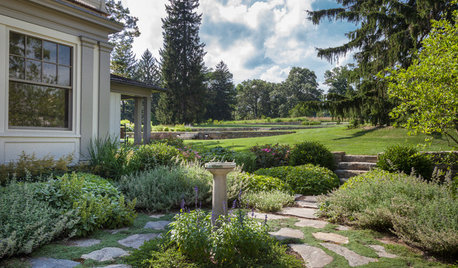
TRADITIONAL HOMESHouzz Tour: Connecticut Farm Restored for Generations to Come
A man renovates his extended family’s stately farmhouse and land. Sustainable practices are used in gardens, wetlands and recreation areas
Full Story
GARDENING AND LANDSCAPINGGenerate Buzz as a Beekeeper
Fresh honey and happy flowers are just two of the perks of a backyard beehive. These 5 guidelines will help you get started
Full Story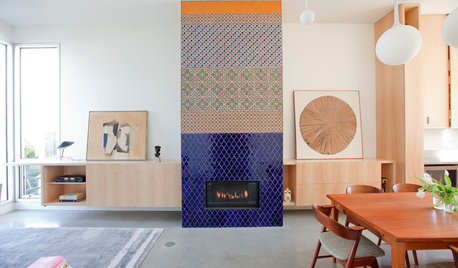
HOUZZ TOURSHouzz Tour: Innovative Home Reunites Generations Under One Roof
Parents build a bright and sunny modern house where they can age in place alongside their 3 grown children and significant others
Full Story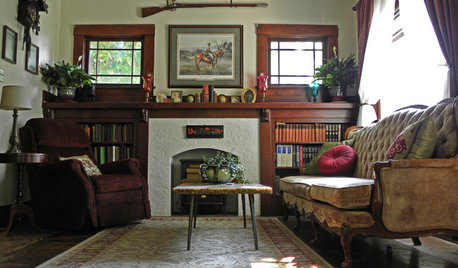
HOUZZ TOURSMy Houzz: 2 Generations Unite in an Oregon Craftsman
For the love of a little boy (and a few chickens), a resourceful family creates a multigenerational home infused with graciousness
Full Story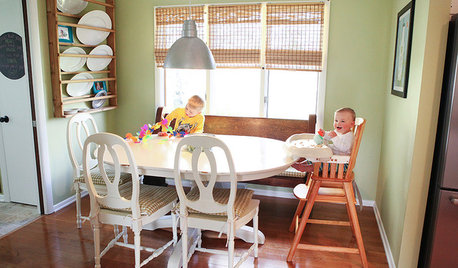
MOVINGSaying Goodbye to One Home and Hello to Another
Honor your past and embrace your future with these ideas for easing the transition during a move
Full Story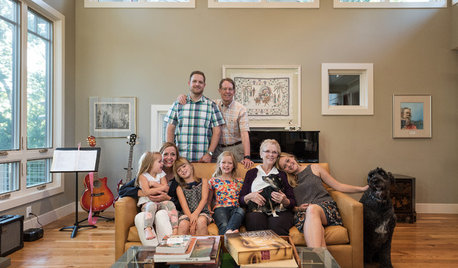
HOUZZ TOURSMy Houzz: Making Room for 3 Generations
A Salt Lake City home creates privacy and independence for grandparents, parents, kids and dogs
Full Story
HOUZZ TOURSMy Houzz: An Australian Home Appeals to 3 Generations
Two separate ecofriendly dwellings on an Adelaide property mean family is never far away
Full Story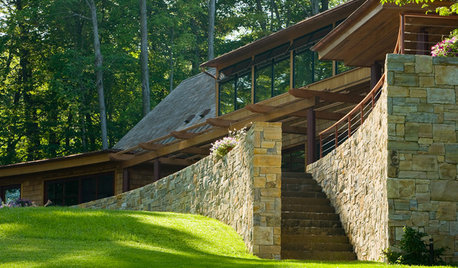
CONTEMPORARY HOMESHouzz Tour: 2 Wings for 3 Generations on a Vermont Lake
An extended family enjoys a spacious waterfront home influenced by farmhouses and Japanese architecture
Full Story
DISASTER PREP & RECOVERYMore Power to You: How to Pick the Right Generator
If your home's electricity goes, don't let it take your necessities with it — keep systems running with this guide to backup power
Full Story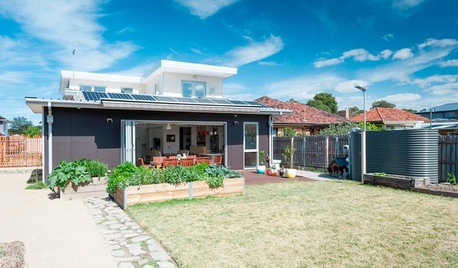
GREEN BUILDINGHouzz Tour: An Energy-Efficient Home for 3 Generations
This Australian house takes sustainability and accessibility to a new level
Full Story





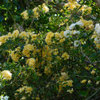
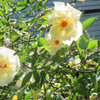

onewheeler